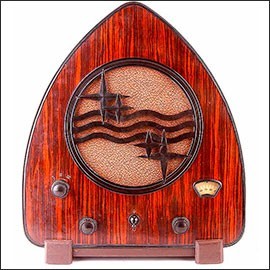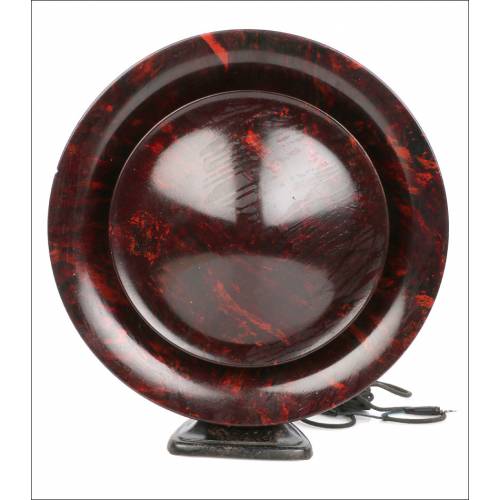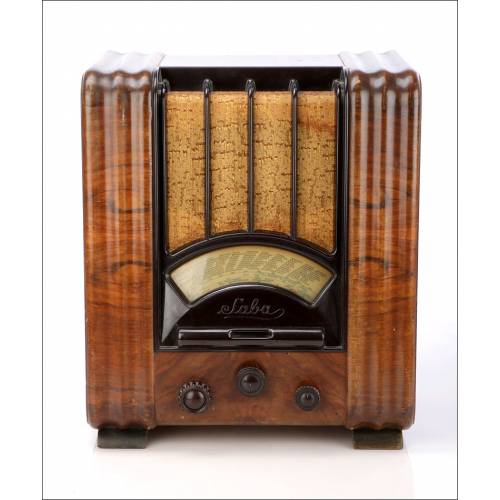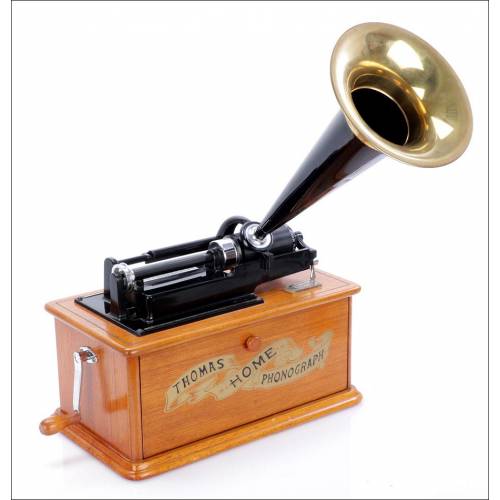Antique Radios
With their unique aesthetics and high quality mechanisms, antique radios maintain their ability to fascinate over the decades. The discovery of electromagnetic waves (later called Hertzian waves) and the subsequent work of scientists such as Nikola Tesla or Alexander Popov culminated in the construction of the first radio system as we know it to...
With their unique aesthetics and high quality mechanisms, antique radios maintain their ability to fascinate over the decades. The discovery of electromagnetic waves (later called Hertzian waves) and the subsequent work of scientists such as Nikola Tesla or Alexander Popov culminated in the construction of the first radio system as we know it today, by Guglielmo Marconi. Compared to other inventions that were revolutionary in their time, but later gave way to new discoveries (such as phonographs or gramophones), today radio continues to occupy a very important place in the lives of millions of people. The charm of the spoken word has managed to hold firm, in the face of the omnipresent image: the famous song of the 1980s, "Video killed the radio star," never came true.
History of early radios.
Prior to the invention of radio as such, the first known mention of electromagnetic waves was made by James Clerk Maxwell in his study. A Dynamical Theory of the Electromagnetic Field,published in 1865. In 1888 Heinrich Rudolf Hertz succeeded in creating such waves artificially, thus proving Maxwell's theory. In his honor, electromagnetic waves are henceforth known as Hertzian waves. In 1894 Guglielmo Marconi built the first wireless telegraphy system, which could transmit and receive Hertzian waves through the air. The Italian inventor founded his own radio communication equipment company, the starting point for the enormous diffusion that the invention would achieve in the following decades. The paternity of the invention is attributed today to Marconi, although at the time it was judicially determined that the previous patents of Oliver Lodge and John Stone Stone anticipated the development of the Italian's invention. The first radio station to operate on a regular basis, Detroit's 8K, began its career in November 1920. It is still in operation today under the name WWJ.
Types of antique radios
We can classify antique radios into two major groups, according to their mechanism: tube radios and transistor radios. Actually, the first ones on record (manufactured in the late 19th century) were galena radios; the first models started operating in 1920. The valve radios were the next step in the evolution of these devices. The mechanism worked by means of triode valves, being the superheterodyne type the most efficient. Almost at the same time, in 1925 Julius E. Lilienfeld invented what is considered the first transistor. At that time no practical application for the invention was found; for several decades research continued in Germany and the United States, until in 1946 three scientists at Bell Laboratories patented the first transistor. The transistor radios began to be marketed in 1954 and definitively replaced the valve radios. During the 1960s and 1970s they were manufactured by the hundreds of millions: their small size and affordable price made the radio a universally used device.
Iconic brands of vintage radios
Many quality antique radios have survived to this day: not only in good condition, but also in working order. The best brands, many of which still exist today as large multinationals in the audiovisual industry, manufactured devices with wonderful designs that continue to tune stations on their nostalgic dials. The most attractive models were manufactured by brands such asPhilips, whose antique radios from the first two decades of the 20th century are authentic icons. The firm Philco also excelled in the manufacture of radios and televisions from the 1930s onwards; its radio-phonographs, produced in conjunction with RCA, are highly sought-after models. Other very popular brands in their time were Loewe (whose Venus radio is a classic), Grundig, Saba or Telefunken.
The universe of antique radios offers a thousand opportunities of discovery to lovers of vintage pieces. Their magnificent designs and ingenious mechanisms, along with the unparalleled sound of turn-of-the-century devices, make them worthy of all our admiration.
Antique Philips Bakelite loudspeaker, 1930s. Antique Philips Bakelite...
Lovely Philips speaker working very well. Nostalgic piece with great decorative potential. Well preserved. Lovely Philips speaker working very...
SoldAntique Saba 630 WL valve radio. Working. Germany 1935 Antique Saba 630 WL valve radio....
Antique Saba 630 WL tube radio. Completely original vintage and in working condition. A very rare piece with great decorative potential. Antique Saba 630 WL tube radio....
SoldVintage Cassette Radio Phonograph Spirit of St. Louis, 1980s. Vintage Cassette Radio...
Nostalgic vintage Spirit of St. Louis cassette radio. It works perfectly. Vintage piece with lots of charm. Nostalgic vintage Spirit of St. Louis...
Sold
New products
-

Antique ivory and silver plated stethoscope, late 19th century
Antique stethoscope from the late 19th century in silver-plated metal...
-

Vintage pendant with shell cameo of Jesús del Gran Poder, carved c. 1970
Vintage pendant with a shell-carved cameo of Jesus del Gran Poder, circa...
-

Antique Roman Style Gilded Silver Chalice with Paten. France, 1932
Antique Roman-style chalice in gilded silver with paten. France, 1932....
-

Beautiful Antique 18 K Gold Ring with 7 Natural Diamonds
Antique 18K gold ring with 7 natural diamonds. Delicate openwork design,...
-

Antique Silver Reliquary. José Vilaplana. Valencia, Spain. Circa 1920
Impressive repoussé silver reliquary by José Vilaplana, Valencia, c....
-

Vintage 18K Gold Ring with 7 Natural Diamonds
Vintage 18K gold ring with seven natural diamonds in floral setting....
-

Antique Silver Chalice. Enameled Crosses. Valencia, Spain, 1942
Spanish chalice from 1942 in solid silver, gifted by the Church of...
-

Antique Silver Chalice and Paten. Granada Spain, circa 1900
Spanish chalice in white silver with matching paten, handcrafted....
Specials
-

Antique 18K Gold Skeletonized Quarter-Repeating Verge Fusee Pocket Watch. France, 1820
Rare 18K-gold skeletonized verge...







